
Palo Alto Teen Sailing Solo Across Atlantic
While his friends and classmates are spending their summer break in the usual fashion, 16-year-old Cal Currier is singlehanding his way across the Atlantic. The sailor from Palo Alto set off in late June aboard a 30-ft sailboat named Argo for a 3,000+ mile voyage from Massachusetts to Gibraltar. He plans to reach his destination by August 6.
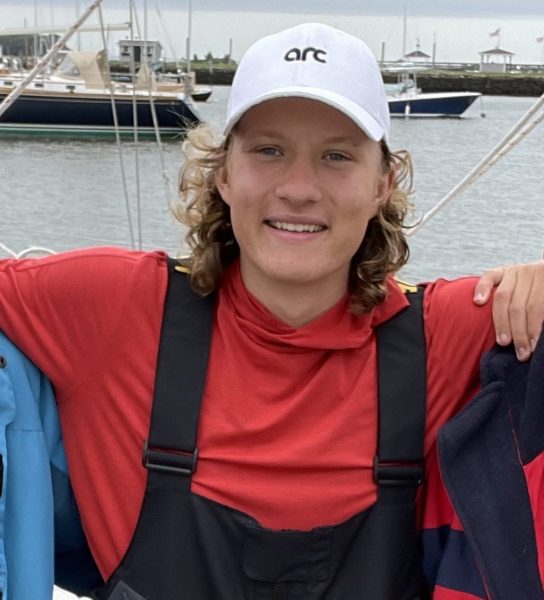
Cal’s parents, James and Trina Currier, told KRON 4 they are very proud of their “daring young man,” who is helping to change the world by showing people what can be done. “In a time when there’s been so much bad news it’s been really heartening and exciting for us to have this really bright spot of good news,” Trina said.
The idea for the voyage surfaced earlier this year, in January. “We were making lists of crazy things to do,” James said. And of the 15 ideas they came up with, “he seized the crossing and off he went.”

Cal then spent six months learning to sail before telling his parents he felt he was ready to depart. And while that doesn’t sound like a lot of time to gain one’s sea legs, the writing has been on the wall for all his life, literally. James Currier has sailed across the Atlantic and through the South Pacific. Cal’s grandfather sailed across the Atlantic twice, and in 1948 his great grandfather built a boat and sailed it to the Galapagos and back. “Cal grew up with this, sort of on the walls of his house,” James said, “so it’s not out of the blue.”
The boat, however, does seem to have come out of the blue. When Cal learned of Argo, she was owned by Sandy Van Zandt in Mystic, Connecticut, who had spent eight years restoring and preparing the 46-year-old Tartan for a solo Atlantic voyage. However, at age 90 Van Zandt, a sailmaker, decided he was unable to complete the journey. Upon meeting Cal, Van Zandt was so happy to hear of the young man’s plan that he sold him the boat for only $12,000.

When asked if they were worried about their son being alone at sea, James and Trina said they were in frequent contact with him. “First thing I do when I wake up is text him,” Trina said. “We text throughout the day.” Cal is also being given regular “finely tuned advice” by a family friend who is a climatologist, which so far “has enabled him to stay in smooth waters.”

The young sailor, who learned the ropes at Spinnaker Sailing in Redwood City, reached the Azores on July 15. It took him 19 days and 3 hours, and he stopped just long enough to refuel, restock his water and food, and download 20 new e-books. He’s now back in the ocean and continuing on toward his next stop in Lagos, Portugal, where he will be met by his parents and his twin brother.
In this video sent to us by Cal’s father James, Cal talks about why he chose to cross the Atlantic.
You can support Cal’s journey through subscribing to his Patreon channel: Cal Heading Out.
Restoring a Classic: The Slog of the Albin Vega 27 ‘Mahina’
John Neal started his ocean sailing in 1974 when, at age 22, he set sail from Seattle on the Vega 27 sloop, Mahina — he sailed 15,000 miles through the South Pacific, part of the time singlehanded. He then wrote the best-selling book Log of the Mahina, which became one of the many books inspiring young sailors, including ourselves, to sail over the horizon. Since then John has sailed about 400,000 miles, much of it teaching others bluewater voyaging through Mahina Sailing. But whatever happened to the original Vega 27 Mahina?

We were talking with John several months ago when he mentioned Mahina had been acquired by a couple in the Northwest who were renovating her. He put us in touch with Debra Taylor and her husband Jeff, who found themselves in possession of the boat and are now up to their eyeballs doing a complete reconstruction. Debra’s story of how they found Mahina and the current state of the project is in the Sightings section of our current July issue.

The story, “The Slog of the Mahina” (it’s going to be a long slog to the finish), is a mid-project report on this ambitious effort to restore the classic, pocket ocean cruiser. In the story Debra mentions a wood we’d never heard of, sapele, which is an African hardwood. Coincidentally, we were recently in a local wine shop admiring a beautiful hardwood countertop and, upon inquiry, the shop’s owner said it was sapele. Funny how these things happen.


The Albin Vega 27 is one of those remarkable small boats that have taken many sailors on voyages large and small. It is an Albin Vega 27 that Matt Rutherford used for a singlehanded, nonstop circumnavigation of the Americas, starting in the Chesapeake and heading up through the Northwest Passage, around the Horn, and home.
We’re looking forward to a future installment of the story and seeing Mahina restored with sails hoisted in her new home waters in the Pacific Northwest.
Ownership Opportunities on the Sea of Cortez
Meet the worldly Casa Blake, a new ownership opportunity in the heart of the Costa Palmas Marina Village. Come explore this collection of residences on the Sea of Cortez in Cabo. Register to find out more.
No Rest for Pacific Cup on Sunday
As the remnants of Hurricane Darby have passed south of the Hawaiian Islands, the Pacific Cup boats still at sea are dealing with increasingly rainy and squally weather as well as a large south swell component. In Kaneohe, however, seas are calm and the party has started. Finishing sailors are trading in their foul weather gear for an aloha shirt, a lei and a well-deserved mai tai.

All the boats in the Alaska Airlines F Division and the BMW of San Rafael Division have finished and are safely tied up. We can now confirm that Roy P. Disney and his crew on the turbo Volvo 70 Pyewacket 70 have indeed claimed first place overall in the Pacific Cup. Less than six hours behind Pyewacket 70 on corrected time is Stu Dahlgren’s Vancouver-based Santa Cruz 70 Westerly, which will finish second in division and second overall. With four more years of accumulated experience, refitting and preparations, the Westerly program has upped the game significantly since 2018.

Third place overall and first place in the BMW of San Rafael Division is Jason Andrews and Shawn Dougherty’s Seattle-based J/125 Hamachi. After an overall win in the 2019 Transpac, the team is back on the box in a Hawaii race after yet another fantastic crossing. With a slower rating than Hamachi, Rufus Sjoberg’s Richmond-based J/125 Rufless finished just a couple of hours behind Hamachi but seemingly corrected out to claim the division win. We say apparently because Hamachi had lodged a protest against Rufless’s ORR rating, claiming a discrepancy.

After much deliberation, the crew on Rufless has decided to withdraw from the Pacific Cup. We wish them the best of luck in having their boat re-measured and re-rated and coming back stronger in 2024. Rufus, navigator Skip McCormack and the entire Rufless crew were incredibly gracious in coming to this decision. The Corinthian spirit of sailing is alive and well in Kaneohe. The Rufless crew and Hamachi crew congratulated each other on a hard-fought race and shared a friendly debrief.
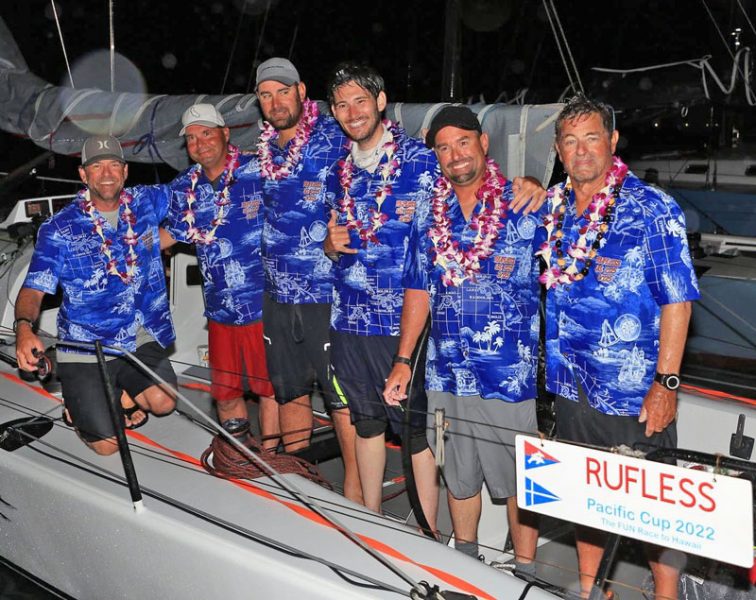
With the fastest couple of divisions both nestled safely in the barn, the focus now turns to the smaller and slower boats still at sea. We are hearing many stories of white-knuckle sailing and huge waves being surfed.
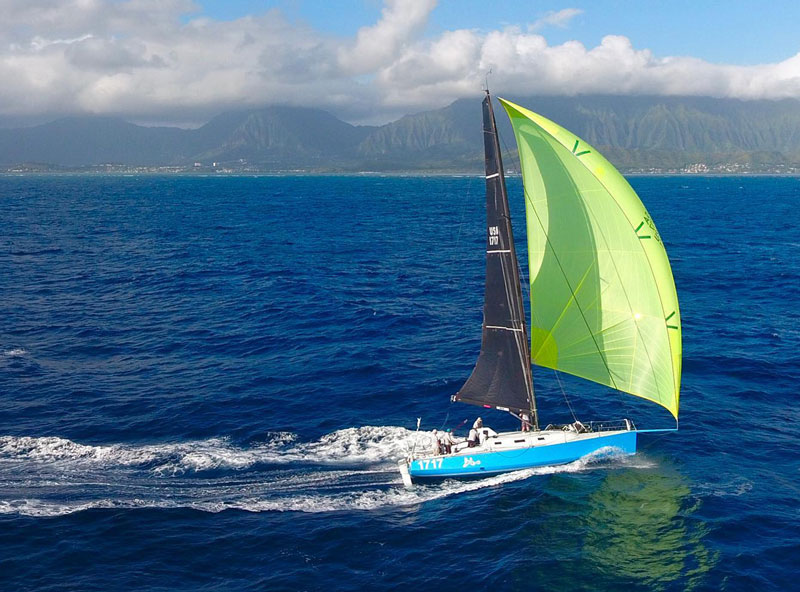
In the Mahina DH2 division, Christina and Justin Wolfe sailed their J/111 Raku into Kaneohe Sunday morning to become the first doublehanded finishers in the race. Much of Kolea DH1 still has more than two or even three days left at sea. A few boats risk missing the awards ceremony this Friday, July 22.
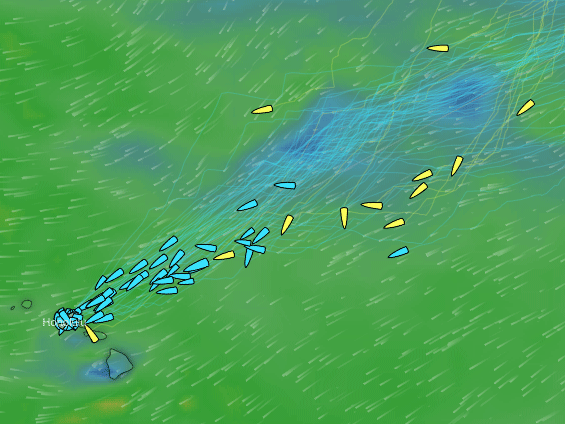
US Coast Guard Reports Boating Accidents Reduced in 2021
The US Coast Guard recently released its 2021 Recreational Boating Statistics, and the news is good. According to the report, last year saw a decline in boating accidents, injuries and fatalities — a pleasant surprise, considering the pandemic-driven increase in boating activity on the water, and the clear increase in boating accidents reported for 2020.
This year’s report shows that across 2021 boating accidents were down 15.7%, injuries decreased by 17.2%, and there were 14.2% fewer fatalities. The fatality rate equates to 5.5 deaths per 100,000 registered recreational vessels, as opposed to 6.5 deaths per 100,000 in 2020.
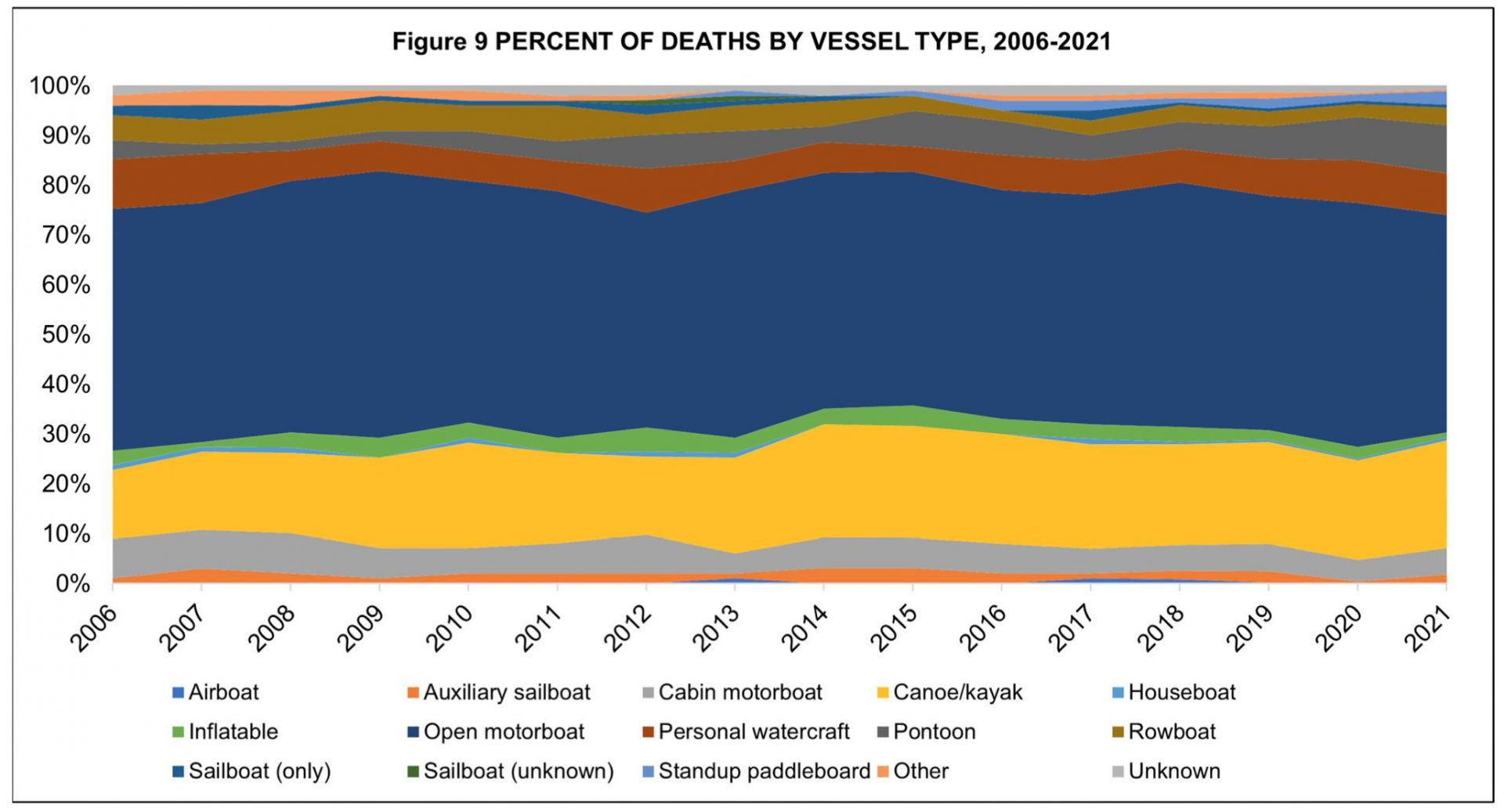
“The new report shows a dramatic decrease in injuries and fatalities, more than I can recall in recent memory,” said BoatUS Foundation for Boating Safety and Clean Water president Chris Edmonston. “However, even with COVID restrictions lifted and boating no longer one of the few ways to recreate with the family, operator inexperience remains one of the top risk factors contributing to accidents.” Operator inattention, improper lookout, machinery failure and excessive speed round out the list.
“The need to focus on these five boating safety basics and the continued need for boating safety education has not changed,” added Edmonston.

One of the many interesting statistics that we gleaned from the USCG report is that out of the 489 souls who died by drowning, 89 were known to be wearing lifejackets, and six were “unknown if worn.” That leaves 394 people not wearing a lifejacket. That surely says something for the efficacy of proper safety attire on board. Also interesting to note is that operator inattention was the top primary contributing factor to accidents.
“We’re unsure if this latest data is an anomaly or a trend,” Edmonston said, “but we believe the increasing number of states requiring mandatory boating safety education, as well as states requiring education for a greater portion of their boating citizens, is having a positive effect.”
The BoatUS Foundation offers a free online boating safety course accepted by boating license agencies in 36 states. Courses are also National Association of State Boating Law Administrators (NASBLA)-approved and recognized by the US Coast Guard. The Foundation also offers On-Water Powerboat Training at 15 locations from Maine to Florida and Southern California.
You can read the full report here, and learn more about the BoatUS Foundation’s free online boating safety course at BoatUS.org.
Waves of Improvement Are Transforming the Berkeley Marina
Waves of improvement are transforming the Berkeley Marina. Download a free day pass for your boat and check out all the improvements we have to offer. A clean, fenced entrance off the freeway transitions drivers off I-80 while smooth paving and new street improvements guide you to your dock gate. Come on in to check out our renovated restrooms, dock improvements, and more.


